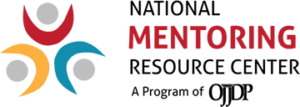A research brief from Child Trends explores how the racial and ethnic identities of adolescents and young adults may shift over time. Foster Care and the Development of Racial and Ethnic Identity delves into the experiences of young people in foster care … Read More
Data

New Toolkit Provides Guidance on Understanding and Applying ICWA
The Indian Child Welfare Act (ICWA) of 1978 outlines guidance and regulations that govern child welfare practice involving American Indian/Alaska Native (AI/AN) children. It upholds the rights and cultures of AI/AN families by outlining protections to keep children with their … Read More

New Report Highlights Child and Family Development Research
The Office of Planning, Research, and Evaluation (OPRE) within the U.S. Department of Health and Human Services released its Child and Family Development Research: Fiscal Year 2023 report summarizing important research projects that seek to improve services for children and families. For … Read More

Family-Agency Leadership Academy Brings Families and Professionals Together for Systems Change
A new training tool from the Children’s Bureau’s Capacity Building Center for States encourages partnerships between child welfare professionals and families with lived experience in child welfare. The Family-Agency Leadership Academy (FALA) is an online resource offering a compilation of videos, tip … Read More

New Report Emphasizes Importance of Post-permanency Services
A recent report from the National Center for Enhanced Post-Adoption Support, Post-Permanency Services: A Worthwhile Investment, emphasizes how critical postpermanency services are in promoting child well-being and long-term permanency for adoptive and guardianship families. The publication highlights key research findings on … Read More

Cultivating Connections: A Message From Commissioner Rebecca Jones Gaston
Each November, we celebrate National Adoption Month by raising awareness of the many children in foster care awaiting loving, permanent homes. This month is also a time to celebrate the professionals who support these young people on their paths to … Read More

Fourteenth Annual Report to Congress on High-Priority Evidence Gaps Across the Lifespan, in All Communities
The U.S. Preventive Services Task Force (USPSTF or Task Force) is an independent, volunteer panel of national experts in prevention, primary care, and evidence-based medicine. This year, the USPSTF celebrates 40 years of making evidence-based recommendations about clinical preventive services … Read More

Characteristics of Transition-Age Youth Engaging In Suicidal Behavior
Youth with foster care experience attempt suicide at three times the rate of their peers in the general population. Research suggests that Transition-Age Youth (TAY), youth ages 16 to 24 who are or were in foster care, may be especially … Read More

A Guide To Applying Youth Voice
Tips To Implement Youth Voice Through A Youthful Advisory Council Introduction This guide is designed for organizations that want to involve young voices and input in their practices, activities, and programs. Its aim is to offer tips and recommendations crafted … Read More

Updated State-by-State Resources Help Families Understand Permanency Options
Kinship foster families who are thinking about taking the next steps to legal permanency have many options to consider and decisions to make for their child and family’s well-being. These include selecting the most appropriate permanency option based on the … Read More
